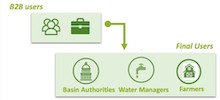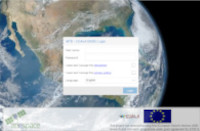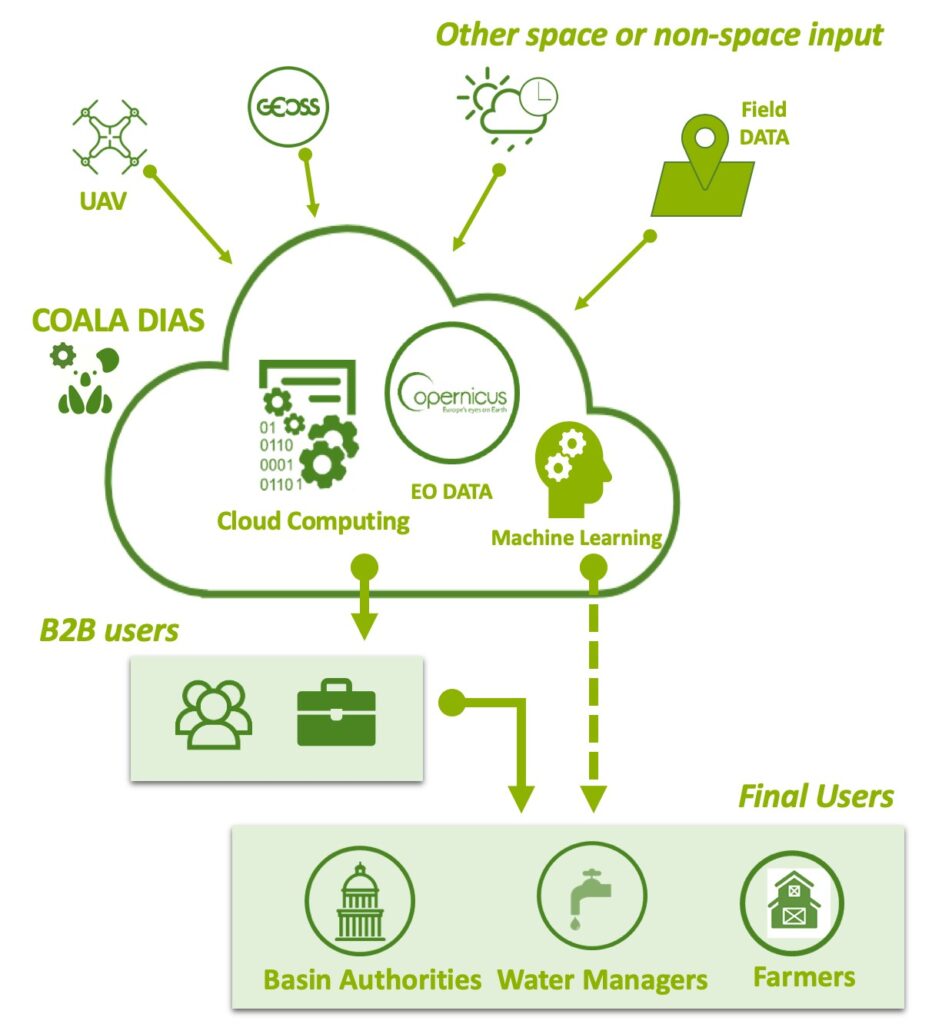COALA will develop Copernicus-based information service for irrigation and nutrient management, built on the consolidated past experiences of the proposed partnership within the context of recent EU projects such as FATIMA (http://fatima-h2020.eu/) and DIANA (https://diana-h2020.eu).
COALA aims at integrating these operational services into existing Australian platforms by adapting them, with technological improvements, to the environmental and agronomical conditions of Australia.
Several sources of data will be exploited: Satellite data, UAV, airborne data, into field sensor data, etc




















